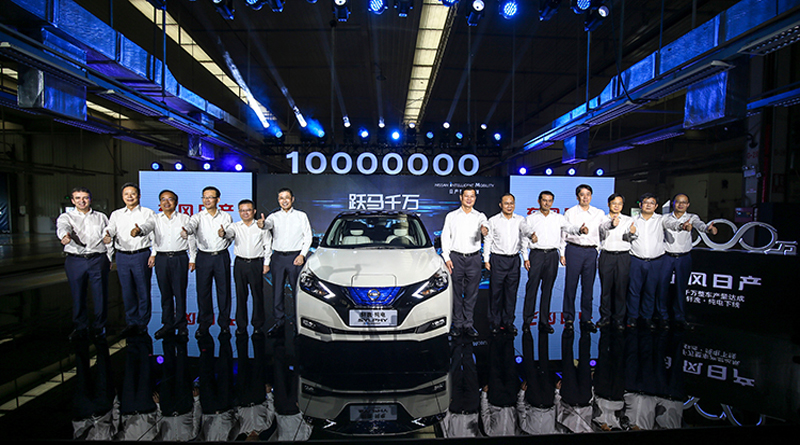Nissan-Dongfeng JV Launches China-focused Zero emission Sylphy

Amidst rising tension from strained trade relations between the US and China, Japanese Automaker Nissan rolling out the zero-emission Sylphy which is designed with Chinese partner Dongfeng in China.
The feat adds to another milestone for Nissan-Dongfeng as the companies have built 10 million vehicles in China since they started operations in 2003.

Nissan’s Sylphy is its first all-electric vehicle built in China specifically for Chinese consumers, the Sylphy Zero Emission was developed based on the platform of the world’s best-selling electric vehicle, the Nissan LEAF, and the best-selling Nissan sedan in China, the Sylphy. It’s being built at Dongfeng Nissan’s Huadu plant.
Nissan plans to launch a lower-priced electric model next year and wants battery-powered vehicles to make up over a third of its sales in by 2022, according to the reports. With Sylphy the Japanese automaker is confident that it will become the main player in the EV market of China as it wants to roll out EVs to appeal to customers within all the market segments.
China is currently the world’s biggest car market and plans to ban the production and sale of diesel and petrol cars and vans. It certainly is a huge task given the fact that the country made 28 million cars last year, almost a third of the global total.
European countries like the UK and France have also announced plans to ban new diesel and petrol vehicles by 2040, as part of efforts to reduce pollution and carbon emissions.
Other global car firms including Renault-Nissan, Ford and General Motors are all working to develop electric cars in China.
China wants electric battery cars and plug-in hybrids to account for at least one-fifth of its vehicle sales by 2025. The shift will have a knock-on effect on oil demand in China which is currently the world’s second-largest oil consumer after the US.




